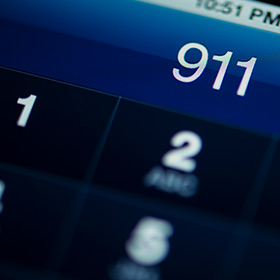How to Recognize a Stroke

On average, someone in the U.S. has a stroke every 40 seconds. While strokes can’t always be prevented, the faster you recognize the signs and symptoms, the more likely you are to reduce the chance of disability or death.
“The key is early recognition,” explains Jason Parker MD, of the Bethesda North Advanced Stroke Center. “Time is the most important thing, if it does happen.”
Recognizing a Stroke
A stroke is an interruption of blood supply to any part of the brain, and is sometimes called a “brain attack.” When blood flow is stopped, the brain tissue does not get enough blood and oxygen to survive, and brain cells can die, causing permanent damage.
At TriHealth, we educate people about stroke signs and symptoms based on guidelines provided by the American Stroke Association, which uses the acronym, “BEFAST.” BEFAST Stands for:
- Balance – Watch for a sudden loss of balance.
- Eyes – Is there a sudden loss of vision in one or both eyes? Or double vision?
- Face – Ask the person to smile and check to see if one side of the face droops.
- Arm – Ask the person to raise both arms and see if one arm drifts downward.
- Speech – Ask the person to repeat a simple sentence, and check to see if words are slurred or the sentence is repeated incorrectly.
- Time – If a person shows any of these symptoms, it is important to get to the hospital as quickly as possible, and immediately call 911.
“Any time someone gets to the hospital within three hours of [the onset of] symptoms, we have an opportunity to use clot-busting medications,” Dr. Parker points out. This applies to patients who are suffering an ischemic stroke (the more common stroke type), which is caused by a blockage in the artery.
The other type of stroke, subarachnoid hemorrhage, is caused by a tear in the artery's wall, which produces bleeding into or around the brain. This stroke is usually accompanied by a headache, often described as "the worst headache of someone's life."
Stroke Risk Factors
There are about 795,000 strokes in the United States each year; however, keeping blood pressure at 120/80 or less could prevent about 50 percent of these strokes.
Common risk factors for strokes are also associated with other health conditions, like:
- Diabetes
- Blood clotting disorders
- Heart Disease
- High cholesterol
- History of heart attack
- Sleep apnea
- Blockages in other arteries
“So, if you have blockages in one artery, you are more likely to have blockages in the brain, too,” Dr. Parker explains.
Other risk factors include:
- Race (Native Americans, Hispanics and African-Americans are at a much higher risk than Caucasians)
- Family history
- Gender (in most age groups, stroke is more common in men than in women)
- Age (Risk goes up as you age)
- Weak areas in an artery wall or abnormal arteries and veins